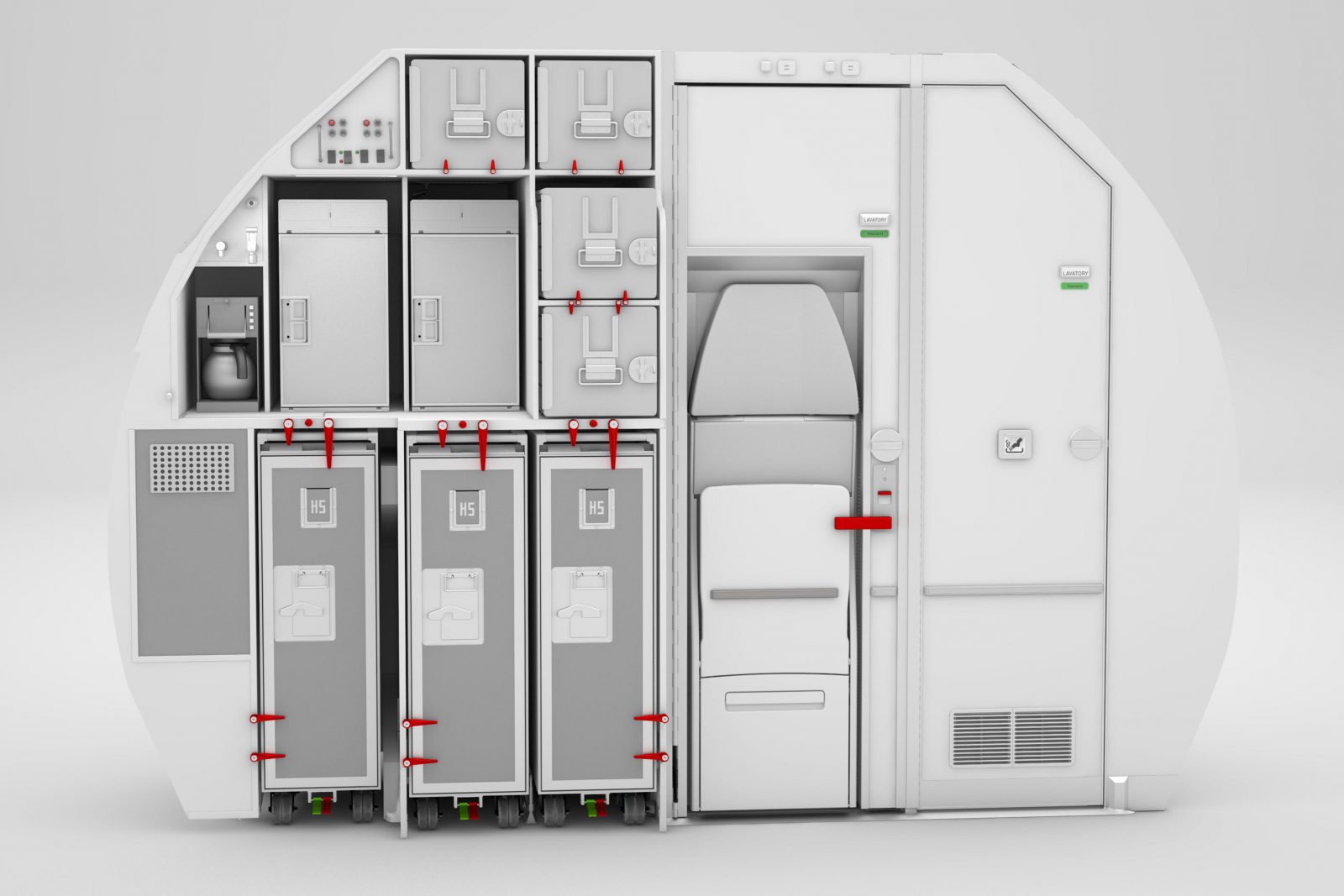
For pretty much everyone, apart from airline shareholders perhaps, Airbus’ Space-Flex combined galley and toilet system doesn’t seem like a positive change for the passenger experience, does it? For those of you who aren’t in the know, the Space-Flex system is a redeveloped galley on short-haul Airbus A320 family single-aisle aircraft that more and more airlines – both low-cost and full-service – are installing on their new and existing planes.
This might not sound all that important – after all, how can a galley affect your travelling experience that much, you ask? But it turns out, that when space is already a premium on Airbus’ smallest family of aircraft, the Space-Flex galley system may well be twisting the screw just that tiny bit too far.
On older A320 aircraft the rear galley takes up the whole back wall of the passenger cabin. Then, just forward of the rear passenger doors come the lavatories on either side of the aisle and eventually, the passenger seating starts. The Space-Flex system, however, aims to maximise as much space in the existing shell of the cabin to add extra passenger seats.
So, the size of the galley is reduced by half and the lavatories are squeezed into the remaining space on the back wall of the cabin. Voila, you’ve suddenly made space for two, or maybe even three, extra rows of seating – depending on how tight you want to make the pitch. All within the same aircraft frame as before.

On the face of it, the Space-Flex system shouldn’t have too much of an effect on the average passenger journey – especially the more forward of the cabin you’re sat. But don’t be fooled into thinking there aren’t any effects – just ask any member of cabin crew who has worked on one of these aircraft.
For many flight attendants, their biggest gripe is the lack of space to do their job. They struggle to set up service items or to find things that are now hidden away. And of course, they’re now sharing their workspace with passengers who are waiting to use the lavatory – the overall effect is that service is considerably slower than what it once was.
Speaking of the lavatories – they’re smaller than the standard toilets you’ll find on most planes (and you thought they were already small enough). There are stories on passengers having to back themselves in for the lack of space, while other passengers have become stuck due to the tight width.
Not that the problem is unique to European aircraft manufacturer Airbus – its arch-rival, Boeing has developed a similar concept for its popular single-aisle 737 aircraft. The extra small sinks and reduced room to manoeuvre have drawn ire from American Airlines flight attendants who complained about the design to company Chief Executive Doug Parker.
Then there’s the fact that with extra passengers onboard, getting everyone on and off, as well as completing the service, all take longer than what it once did. Overall, this seemingly small change could have a big impact on your journey.
Not that either Airbus or the airlines buying the system are going to admit that. Airbus simply says space has been “optimised” and claims the system allows “high service levels to be maintained.” In fact, the design in Space-Flex V.2 which has been flying since May 2016 includes a lavatory for passengers with reduced mobility (PRM).

We’ve known that some airlines haven’t been entirely convinced about the benefits of Space-Flex. A couple of years ago, an unnamed “major airline” reportedly “killed” plans to install Space-Flex after finding that “no group other than finance was enthusiastic about it.”
Yet, that was a couple of years ago and much has changed in that time. It’s not just low-cost airlines like easyJet who have taken to retrofitting their fleet with Space-flex. Both Lufthansa and British Airways – two major and supposedly premium European airlines – have embraced the system.
Reports out of the U.S., however, suggest that some airline executives will go ahead with Space-flex while acknowledging the fact that service standards might decline and cabin crew will invariably have a tougher job on their hands.
Robin Hayes, the chief executive of New York-based jetBlue recently made a few interesting comments during a videotaped call to employees, according to Bloomberg, saying of Space-Flex:
“Do I love the fact that we had to go to Space Flex? No, I’ll be honest — of course not. It creates a much bigger challenge for our crew members to provide that service.”
It comes as the airline plans to switch to cart-based service delivery model this month in order to “mitigate some of the pain points with the Flex.”
In the past, jetBlue has taken orders from customers at the seat and then delivered their food and beverages via a tray-based service. But with Space-Flex, crew have apparently preferred doing the service from a cart in the aisle – the airline hopes the change will reduce service times by half and allow it to offer a full range of F&B options on 95% of flights.
Whatever your opinion of Space-Flex, it’s doubtful that it’s going to change now. Whether it helps to bring ticket prices even lower or simply boosts airline profits, cabin crew will need to adapt to the new design. For it’s part, jetBlue says crew will be using specially adapted half-carts – designed by crew to make their job as easy as possible.
Mateusz Maszczynski honed his skills as an international flight attendant at the most prominent airline in the Middle East and has been flying throughout the COVID-19 pandemic for a well-known European airline. Matt is passionate about the aviation industry and has become an expert in passenger experience and human-centric stories. Always keeping an ear close to the ground, Matt's industry insights, analysis and news coverage is frequently relied upon by some of the biggest names in journalism.










Flight attendants jump seats are the cause of severe back pain. Every flight attendant I’ve flown with has suffered from low back pain, some have to see a doctor regularly.